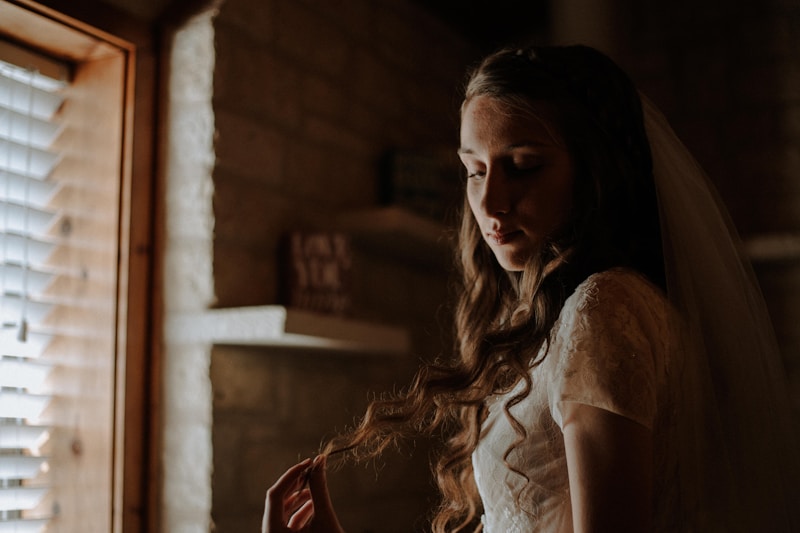The Role of Veils in Wedding Traditions: A Timeless Symbol of Love and Culture
Weddings are a celebration of love, culture, and tradition, where rituals and customs hold significant meaning. One such tradition that remains prominent across various cultures is the use of veils in wedding ceremonies. The role of veils in wedding traditions has evolved over time, encompassing a rich tapestry of meanings that reflect societal norms, religious beliefs, and individual preferences. This article delves deep into the various aspects of veils in weddings, their historical significance, cultural variations, and modern interpretations.
Historical Significance of Wedding Veils
Historically, veils have been woven into the fabric of wedding ceremonies for centuries. They can be traced back to ancient civilizations. Here are some key historical points regarding the use of veils:
| Era | Culture | Significance |
| Ancient Rome | Roman | Worn by brides to symbolize modesty and fidelity. |
| Middle Ages | European | Represented purity and was often a symbol of virginity. |
| 19th Century | Victorian | Veils became a fashion statement, enhancing the bride's elegance. |
The veil’s evolution mirrors changing cultural norms and values, reflecting society’s perceptions of marriage and femininity throughout different historical eras.
Symbolism Behind Wedding Veils
The veil is laden with symbolism. Traditionally, it is seen as a representation of:
- Modesty: Historically, veils were worn to cover the face, embodying modesty and virtue.
- Protection: Some cultures believed that veils protected the bride from evil spirits and negative energies on her wedding day.
- Transition: Wearing a veil marks the transition from singlehood to marriage, often being removed during the ceremony to symbolize the bride’s new status.
Cultural Variations in the Use of Veils
The role of veils varies significantly between cultures, illuminating the rich diversity of wedding traditions worldwide. Let's explore a few notable examples:
Western Weddings
In many Western cultures, especially in the United States and Europe, brides typically wear white wedding gowns paired with a veil. The length and style of the veil can vary greatly, from short styles to long cathedral veils cascading down the back. This combination largely symbolizes purity and sophistication. The act of lifting the veil is often a poignant moment during the ceremony, symbolizing the groom’s acceptance of the bride and the completion of the veil's protective role.
Middle Eastern Weddings
In various Middle Eastern cultures, veils can hold different meanings. In countries like Egypt and Lebanon, brides may choose to wear a more decorative “tulle” or “badlah” that showcases intricate designs while still preserving a degree of modesty. Here, the veil reflects cultural expectations and personal choices about femininity and identity.
Indian Weddings
In Indian weddings, the use of veils can be seen in the form of the "ghunghat" or "dupattas," worn by brides during the ceremony. This practice represents modesty and respect but, significantly, also signifies the bride's connection to her family. The act of unveiling often serves as a ritual that involves family members, emphasizing the importance of familial bonds in the marriage.
Modern Interpretations of Wedding Veils
Modern brides are increasingly personalizing their wedding veils, making them an essential expression of individuality. Customization can include:
- Personal embellishments: Brides may add their unique touch to the veil, such as embroidery of names, dates, or meaningful symbols.
- Non-traditional colors: While white remains popular, more brides are choosing colorful or patterned veils that resonate more closely with their personalities.
- Alternative styles: Short veils, capes, and hairpieces are becoming fashionable, allowing brides to express their style in unique ways.

The Role of Veils Beyond the Ceremony
The veil can also play a part in post-wedding traditions. For instance, some brides choose to preserve their wedding veils as family heirlooms or creatively repurpose them in meaningful ways, such as incorporating the fabric into future family gatherings or fashion items.
Common Questions About Wedding Veils
As couples prepare for their big day, they often have questions regarding wedding veils. Below are some frequently asked questions:
- Do I need to wear a veil? The choice to wear a veil ultimately lies with the bride. While traditional, it's not a necessity.
- What are the different styles of wedding veils? Veils come in various styles, including birdcage, cathedral, chapel, and fingertip lengths.
- Can the groom participate in choosing the veil? Absolutely! Involving the groom in this decision can be a beautiful moment of shared experience.
Conclusion: Embracing the Tradition of Wedding Veils
The role of veils in wedding traditions is not merely an item of fabric but rather a profound symbol of love, respect, and heritage. As weddings continue to evolve, the essence of the veil remains relevant, still representing emotional depth and cultural significance. Whether you opt for a traditional approach or take a modern twist, choosing how to integrate a veil into your wedding day is a wonderful reflection of who you are as a couple.
As you plan your wedding, consider the importance of the veil in both historical and modern contexts. Celebrate your journey together through your choices and remember the significance behind each element of your ceremony. Embrace the beauty, history, and connection that the veil brings to your special day. Remember, the most important aspect of any wedding is the love and commitment it represents.